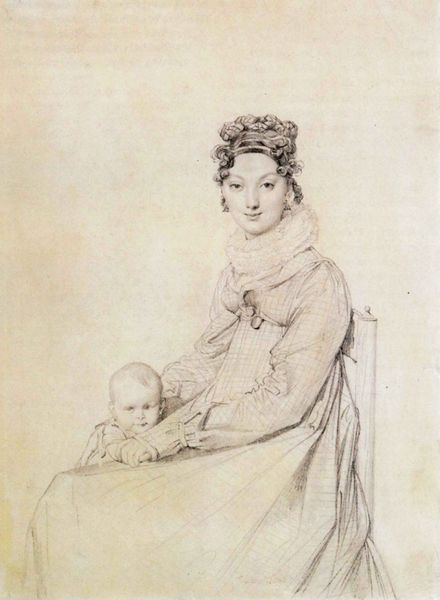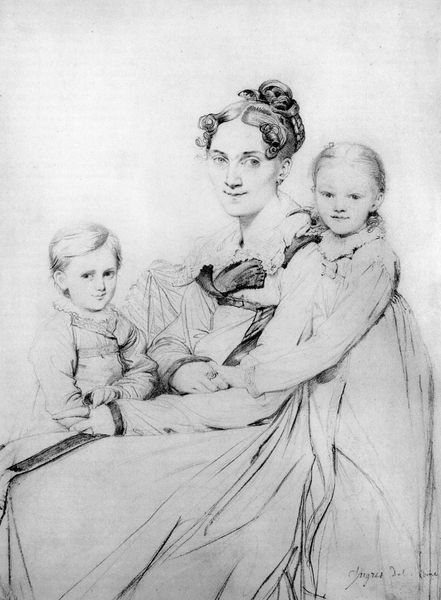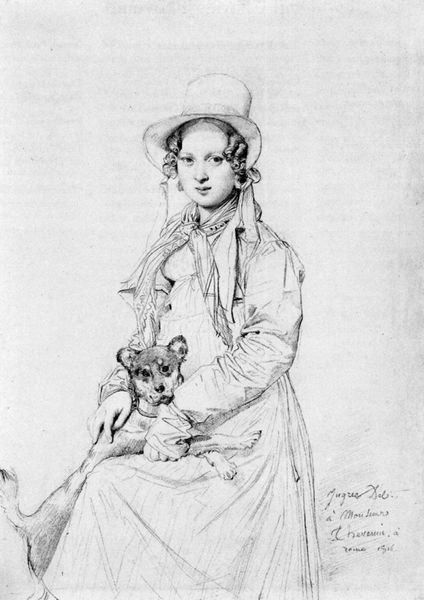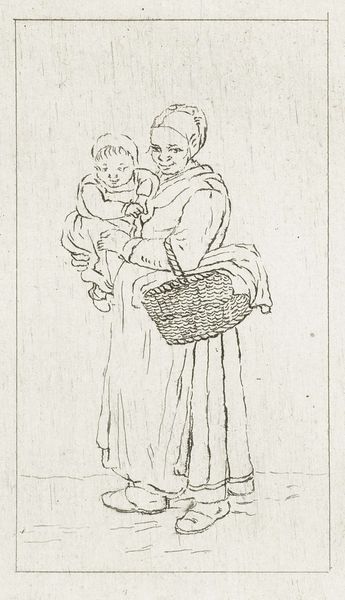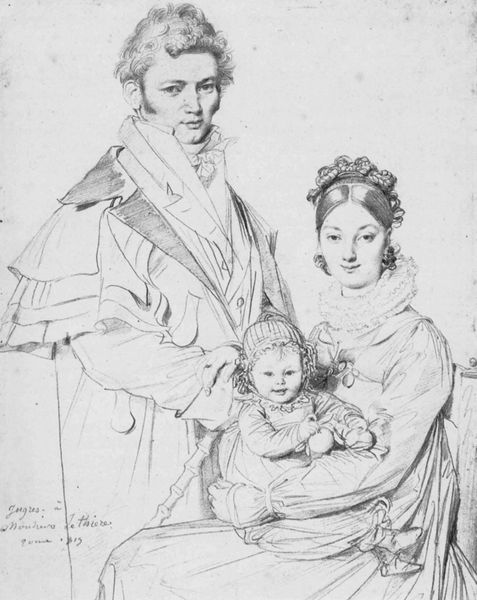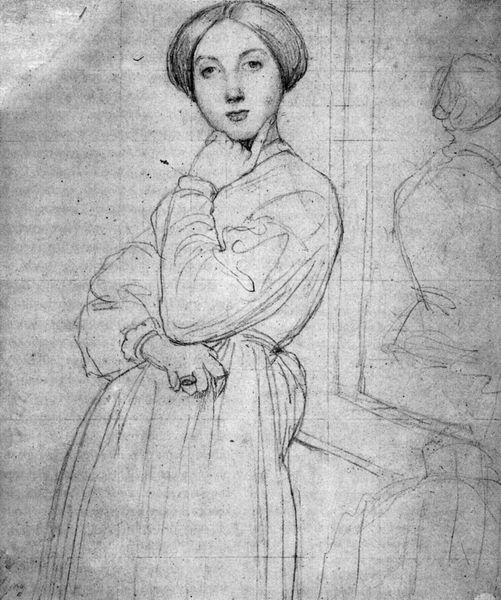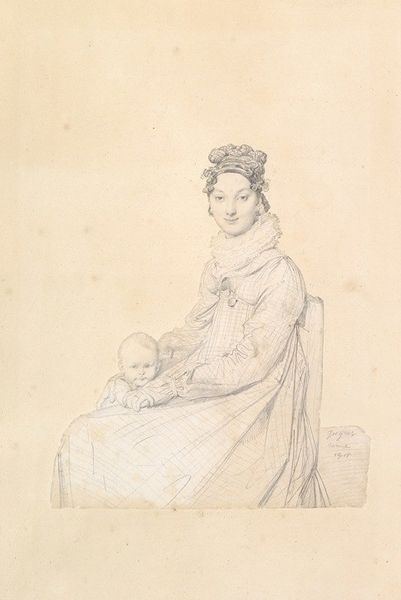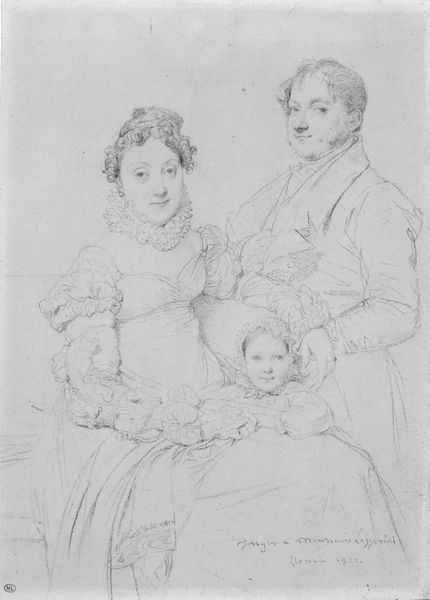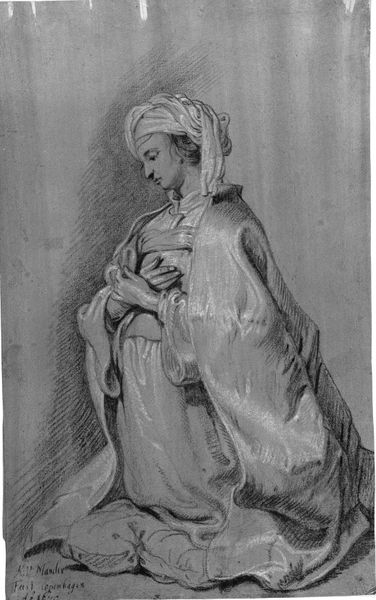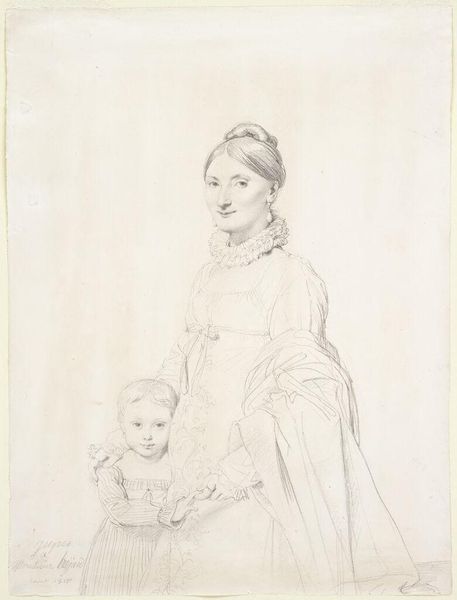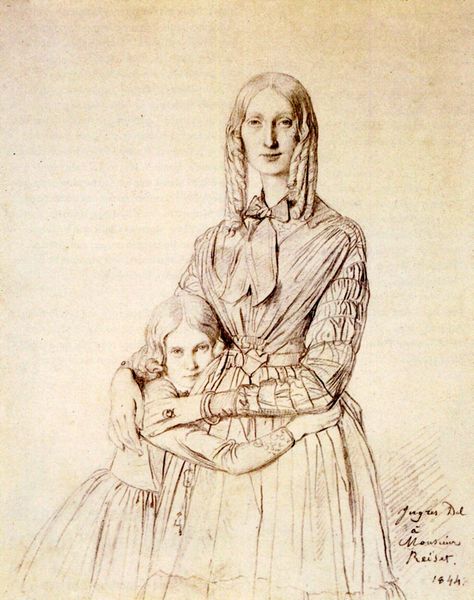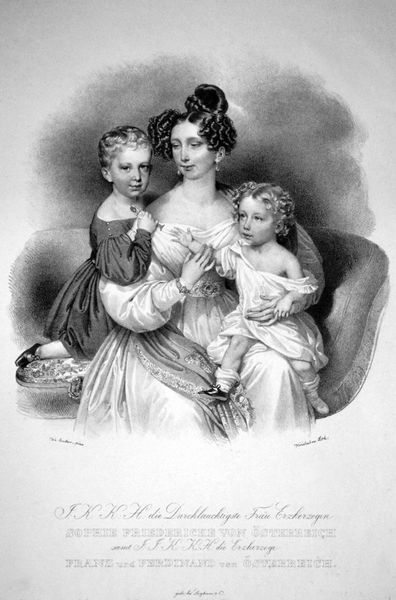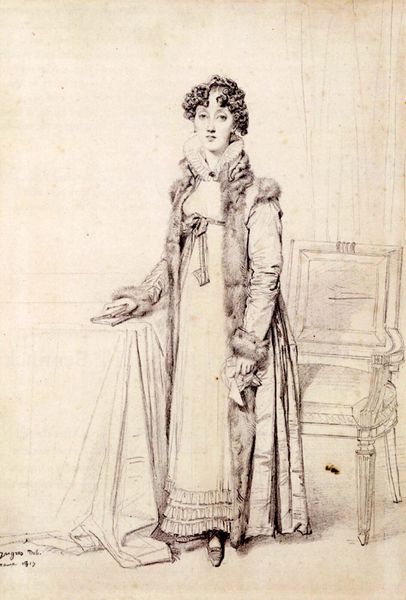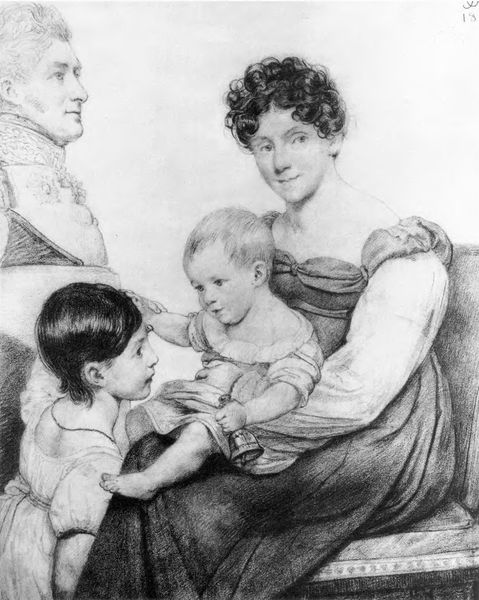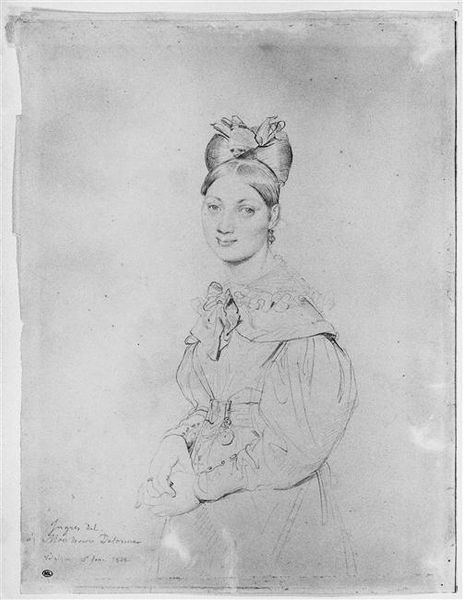
drawing, pencil
#
portrait
#
drawing
#
neoclacissism
#
pencil sketch
#
charcoal drawing
#
child
#
pencil
#
portrait drawing
#
academic-art
Copyright: Public domain
Editor: So, here we have Ingres’ “Madame Baltard and her daughter, Paule” from 1836, a pencil drawing. It's delicate, almost like a fleeting moment captured on paper. The details in the mother’s face are incredible. What's your take on this piece? Curator: Well, looking at the *means* of production here – the humble pencil – reveals much about artistic labor at the time. Ingres, lauded as a master, still engaged in portrait commissions, often rendered in drawing, likely as preparatory works or quicker, more affordable options for his patrons. Consider the paper itself, a manufactured object, its availability dictated by industrial advancements and impacting artistic practice. What does the meticulous detail tell us about Ingres’ studio practice and the demands of his clientele? Editor: That’s a really interesting perspective! I hadn't thought about the paper itself as a product. How does this focus change our understanding of Ingres and Neoclassicism? Curator: Neoclassicism often projects an image of lofty ideals and grand narratives. But a materialist lens pulls us back to earth, grounding the art in the tangible realities of production and consumption. Think about the social context: Who were the Baltards? How did their social standing influence the materials used and the way Ingres chose to depict them? Also, consider Ingres’ drawings within his larger oeuvre— were drawings such as this a commodity of sorts? Editor: So, by analyzing the pencil, paper, and social dynamics, we understand that Neoclassical art isn't just about aesthetic ideals but is also rooted in the material world and the artist's means of survival. That gives me a whole new perspective! Curator: Precisely! It forces us to consider the conditions under which art is made and the interplay between artistic genius and the social and economic forces shaping it. Editor: Thanks! This materialist perspective has completely changed the way I see not just this drawing, but all art. It’s much more connected to the real world than I initially thought.
Comments
No comments
Be the first to comment and join the conversation on the ultimate creative platform.
